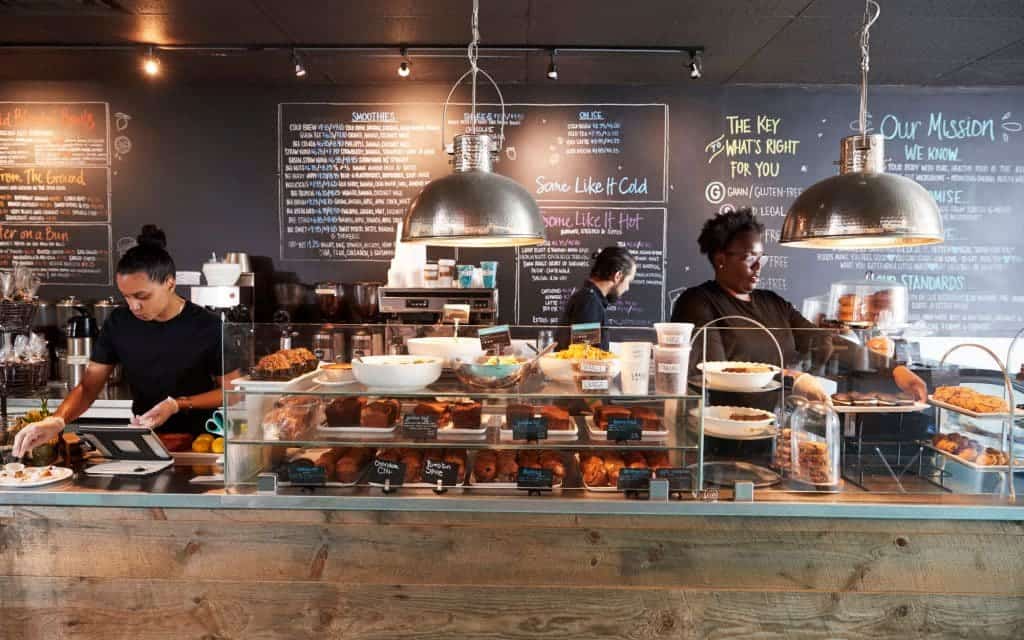It can be exciting to open the doors of your newly launched café, but there’s one important thing to sort out first—taxes. Sales tax compliance might not be as enticing as the perfect espresso shot, but it’s key to a successful coffee business.
In this article, learn the basics of tax compliance before serving your first coffee cup. Plus, explore essential strategies to make tax management simple and hassle-free.
Why You Need an Accountant for Your Coffee Shop
Tax laws can be complex, and they may change without your knowledge. In any business, accountants help take that workload off your shoulders. They’re well-versed in tax codes and can help navigate the intricacies of tax compliance, ensuring you file your taxes accurately and take advantage of any available deductions. In the long run, getting an accountant saves you money from costly mistakes.
Different types of accountants specialize in various areas of finance and business, including a cost accountant, a financial planner, or a forensic accountant. But if you’re operating online, it’s best to get an e-commerce accountant specializing in online retail. If you’re selling on Amazon, hiring a reliable Amazon accountant helps you navigate through the platform’s ever-changing expenses and fees so no penny goes to waste!
How to Keep Accurate Financial Records for Your Coffee Shop
Keeping accurate and organized records offers valuable insights into your business’s financial health. It helps prepare your tax returns and financial statements, which are crucial when dealing with your bank or creditors. Aside from getting an accountant, the following extra steps can make a huge difference in managing your finances.
Use Accounting Software
Invest in accounting software specifically designed for small businesses. These programs often have user-friendly interfaces and can automate many aspects of record-keeping, including sales tracking, expenses, payroll, and tax calculations. Some popular contenders you can consider are the following:
- QuickBooks Online. This easy-to-use platform offers a variety of features, such as invoicing, expense tracking, payroll, financial reporting, and tax preparation.
- Xero. One of the most popular accounting software for businesses. Xero is known for its ease of use and ability to integrate with other business software programs.
- FreshBooks. This is a good choice for small businesses that need a simple, easy-to-use, and less expensive accounting software program. Get features such as invoicing, expense tracking, and time tracking.
- Zoho Books. A cloud-based accounting software program. Zoho Books offers a comprehensive suite of features like invoicing, expense tracking, payroll, financial reporting, and inventory tracking.
Create a Chart of Accounts
Develop a clear and organized chart of accounts tailored to your coffee shop’s needs. Suppose you’re running a coffee shop specializing in authentic mushroom coffee. In that case, your categories may include sales, expenses (such as coffee supplies, utilities, employee wages), assets (equipment, furniture), and liabilities (loans, outstanding bills).
Plan Your Quarterly Estimated Tax Payments
Owners of small businesses like cafés or coffee shops are required to pay taxes quarterly as they don’t have taxes automatically withheld from their salaries like regular employees. Timely and accurate quarterly estimated tax payments help avoid penalties for underpayment from the Internal Revenue Service (IRS).
Planning tax payments involves a long process, especially for starters. Here’s a quick guide to keep you on track:
- Understand your tax obligation. Determine if you’re required to pay quarterly estimated taxes. Let’s say you expect to owe $1,000 or more in taxes upon filing your annual return, then you should make quarterly payments.
- Calculate your estimated tax liability. Estimate your total annual income and subtract eligible deductions and credits. Use this information to calculate your expected tax liability for the year.
- Divide by quarters. Divide your estimated annual tax liability by four to determine your quarterly payment. The IRS provides Form 1040-ES, which includes a worksheet to help you calculate this amount accurately.
- Consider tax deductions. Common deductions for coffee shop owners may include coffee supplies, equipment, utilities, rent, wages, and marketing expenses. Proper record-keeping is essential to track these expenses.
- Know the due dates. Quarterly estimated tax payments are often due on the 15th of April, June, September, and January of the following year. Be aware of these dates to avoid late payment penalties.
- Account for seasonal variations. If your coffee shop experiences seasonal fluctuations in revenue, adjust your estimated tax payments accordingly. You might owe more taxes during busier months, so plan for higher quarterly payments during those periods.
Stay Compliant, Stay Profitable
From understanding sales tax regulations to keeping records and planning quarterly estimated tax payments, each step keeps your coffee business on track to success. As you serve that perfect cup for your customers, also ensure a strong financial foundation for your business, starting with the tips above!

- Level Up Your Business with Expert AI Integration - October 17, 2024
- 10GbVPS Review – Review Their VPS Hosting Services (2024) - June 1, 2024
- BlueServers Review – Unbiased Look at Their Dedicated Hosting Services (2024) - June 1, 2024

